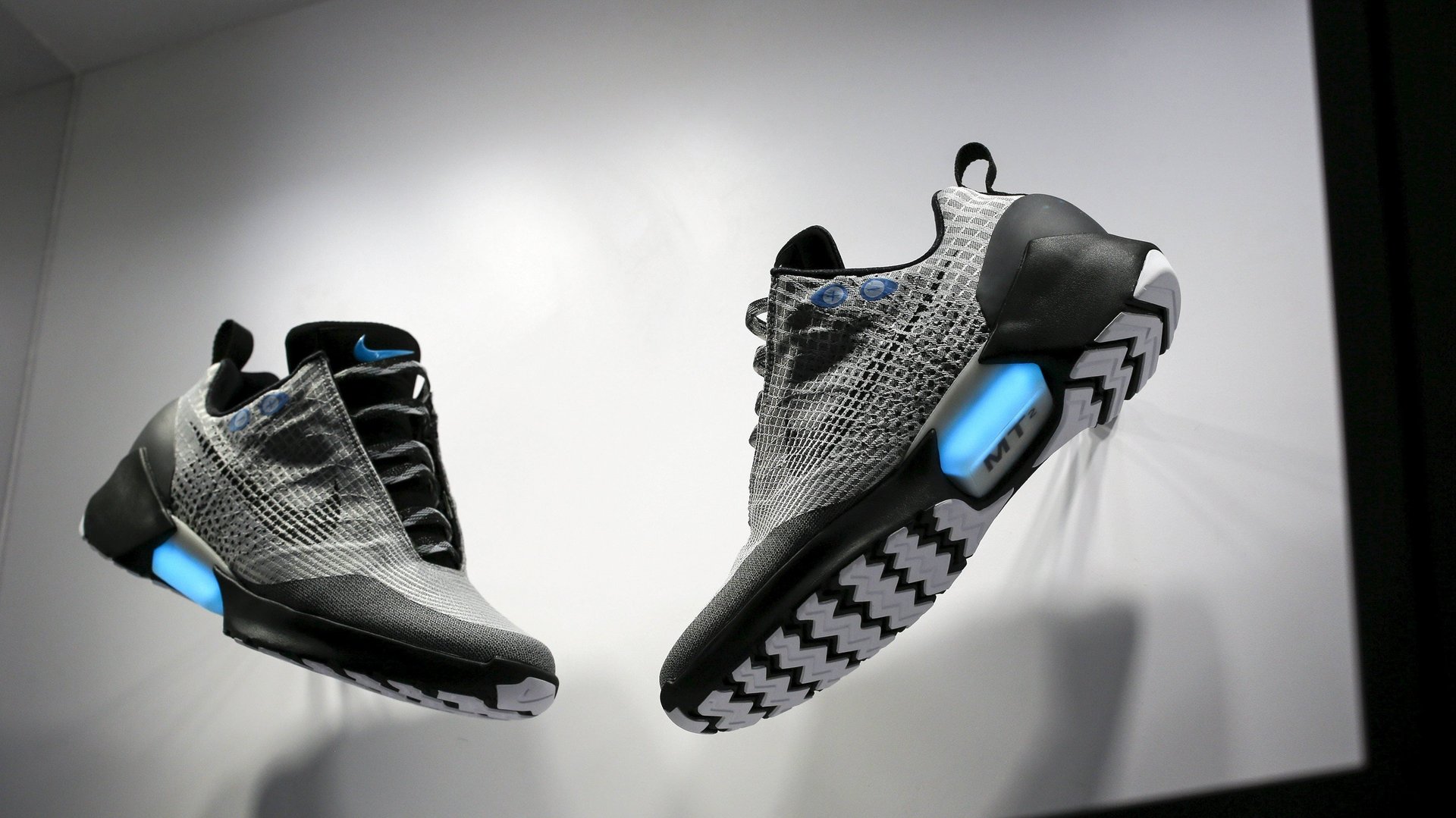A former Nike engineer’s strategy for innovating fast
The engineers at Nike face a lot of technical challenges when they’re developing the company’s next big product, but Tiffany Beers probably faced some of the biggest.


The engineers at Nike face a lot of technical challenges when they’re developing the company’s next big product, but Tiffany Beers probably faced some of the biggest.
Beers was the Nike innovator charged with making the Nike Mag—the auto-lacing sneaker first dreamed up in the 1989 movie Back to the Future II—into a real product. Not only that, she also had to adapt the fictional tech into a functional shoe for athletes, eventually called the HyperAdapt 1.0.
At a recent footwear conference, Beers, who left Nike in 2017 for a brief stint at Tesla, talked about the challenges of making the shoes, and revealed one of her favorite strategies for finding solutions to big problems in a short time frame. It’s based, improbably enough, on a cooking-competition show called “Cupcake Wars.”
The team members working on the auto-lacing technology had some sense of how to use a motor to power it, but they had to solve the problem of where in the shoe it would pull the laces. They heard hundreds of ideas from people in the company, but they didn’t know how viable the ideas really were.
They decided to create some friendly competition to figure that out. To everyone who brought an idea, Beers said: “Go build it for me in one hour. Bring it back to me. Tell me if the idea is still viable. If it’s still viable, tell me what makes it viable or what’s limiting it.”
That’s where Cupcake Wars comes in. In the show, contestants get a limited amount of time to bake their best cupcakes in three escalating elimination challenges. The first is judged solely on taste, the next on taste and appearance, and then in the final round, the remaining two bakers get a team to help them make 1,000 cupcakes.
Beers adapted the format. Those who looked to have a viable solution got four more hours to keep developing it. If it was still viable, they got two or three days, but this time had to produce a workable idea. By this point they’d only spent four days developing a new innovation, Beers says, and if it still held up at that point, they would go ahead and build an actual product, usually taking about a week or so.
In contrast with Silicon Valley’s unofficial motto of “fail fast,” Beers says the point of this method is to learn fast. The team quickly realized what it didn’t know, figured out what the main obstacles were, and also got a sense of what the limits were to potential solutions. (In this case, they needed to wait for advances in electromagnets.)
They used this process repeatedly when developing the HyperAdapt, according to Beers, and it had a few advantages. ”Over-engineering, over-analyzing, over-talking about the concept doesn’t always bring good innovation,” she said. “You learn from trying, not assuming.”
The other benefit: “I like competition,” she explained. “I think competition in a friendly manner is the best way to do innovation work.”